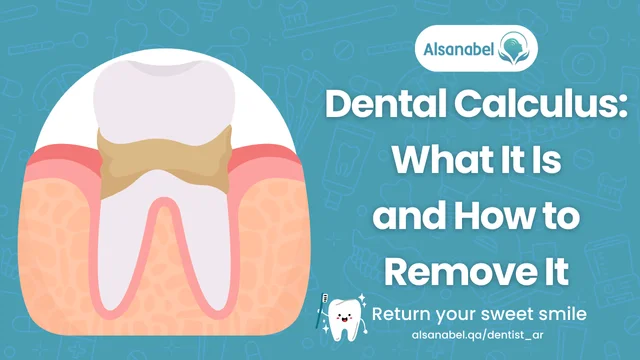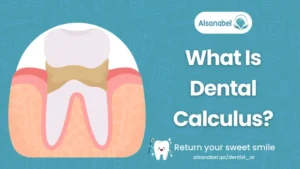
Good oral hygiene is essential for maintaining healthy teeth and gums. However, even with regular brushing and flossing, many people still struggle with dental calculus, a hardened form of plaque that builds up on teeth over time. If left untreated, dental calculus can lead to serious oral health problems, including gum disease and tooth decay.
Many individuals ask, “What is tartar on teeth?” and search for effective ways to remove and prevent it. In this article, we will explore what dental calculus is, how to remove it, and the best strategies for preventing tartar buildup to maintain optimal oral health.
What Is Dental Calculus?
Dental calculus, commonly referred to as tartar, is a hardened deposit that forms on the teeth when plaque is not removed promptly. Plaque is a sticky film of bacteria that accumulates on the surface of the teeth after eating or drinking. When plaque is left undisturbed for long periods, it mineralizes and hardens, turning into tartar, which cannot be removed with regular brushing alone.

What Is Tartar on Teeth?
Tartar forms both above and below the gumline, making it a significant oral health concern. It provides a rough surface where more bacteria can accumulate, increasing the risk of gum disease, cavities, and bad breath. Unlike soft plaque, tartar is strongly bonded to the tooth enamel, requiring professional intervention for removal.
How Does Dental Calculus Form?
The process of tartar formation follows these steps:
- Plaque Accumulation – Bacteria in the mouth mix with food particles and saliva to form plaque.
- Mineralization – If plaque is not removed within 24 to 48 hours, minerals in saliva cause it to harden.
- Tartar Development – The hardened plaque (dental calculus) builds up on teeth, making removal with a toothbrush impossible.
If left untreated, dental calculus can lead to gum inflammation (gingivitis) and progress into periodontitis, a severe form of gum disease.
How to Remove Dental Calculus: Effective Treatment Options
Once dental calculus forms, removing it requires professional treatment. However, some home remedies may help prevent further buildup.
1. Professional Dental Cleaning (Scaling and Root Planing)
The most effective way to remove tartar is through a professional dental cleaning, known as scaling. This procedure involves:
- Using specialized dental instruments to scrape away dental calculus above and below the gumline.
- In more severe cases, root planing may be required to smooth the root surfaces and prevent bacterial buildup.
2. Ultrasonic Scaling
Some dentists use ultrasonic scalers, which emit vibrations to break up hardened tartar. This method is highly effective for how to remove dental calculus without causing significant discomfort.
3. Home Remedies to Help Reduce Tartar Formation
While tartar itself cannot be removed at home, there are some methods to slow its formation and keep plaque levels low:
– Baking Soda Toothpaste
Baking soda has mild abrasive properties that can help reduce plaque buildup before it turns into tartar. Brushing with a baking soda-based toothpaste can minimize bacterial growth.
– Oil Pulling
Oil pulling with coconut or sesame oil may help reduce plaque bacteria. Swishing one tablespoon of oil in your mouth for 10–15 minutes can help maintain oral hygiene.
– Apple Cider Vinegar Rinse (Occasionally)
Diluting apple cider vinegar with water and using it as a mouth rinse can help dissolve minor plaque deposits. However, frequent use is not recommended, as its acidity can erode enamel.
Preventing Tartar Buildup: Best Practices for Long-Term Oral Health
Prevention is key when it comes to managing dental calculus. The following strategies can help reduce plaque accumulation and stop tartar from forming.
1. Brush Your Teeth Twice a Day
Brushing with fluoride toothpaste helps remove plaque before it hardens into tartar. For optimal results:
- Use a soft-bristled toothbrush to avoid damaging gum tissue.
- Brush for at least two minutes twice daily.
- Pay special attention to the gumline and back teeth, where tartar tends to form first.
2. Floss Daily to Remove Plaque Between Teeth
Flossing is crucial for removing plaque in hard-to-reach areas. Skipping flossing allows plaque to accumulate, increasing the likelihood of tartar formation.
3. Use an Antibacterial Mouthwash
Rinsing with an antibacterial mouthwash can help kill bacteria responsible for plaque buildup. Look for mouthwashes containing:
- Chlorhexidine
- Cetylpyridinium chloride
- Essential oils (such as tea tree or eucalyptus oil)
4. Maintain a Healthy Diet
Certain foods contribute to tartar buildup, while others promote healthy teeth.
Foods to avoid:
- Sugary snacks and drinks (fuel bacterial growth)
- Sticky foods (cling to teeth and encourage plaque formation)
- Acidic foods (weaken enamel and allow tartar to stick)
Foods that help prevent tartar:
- Dairy products (calcium strengthens enamel)
- Crunchy fruits and vegetables (natural plaque removers)
- Green tea (contains antibacterial properties)
5. Quit Smoking and Tobacco Use
Smoking increases plaque and tartar buildup, making it harder to maintain oral health. Quitting smoking significantly reduces the risk of gum disease and dental calculus accumulation.
6. Regular Dental Checkups and Cleanings
Dentists recommend professional cleanings every six months to remove tartar and prevent gum disease. However, some individuals may need more frequent cleanings based on their risk level.
How often should you get dental calculus removed?
- Every 6 months for individuals with good oral hygiene.
- Every 3–4 months for those prone to excessive tartar buildup or gum disease.
Frequently Asked Questions About Dental Calculus

What is dental calculus?
Dental calculus, or tartar, is a hardened plaque deposit that forms on teeth when plaque is not removed. It provides a rough surface for bacteria to accumulate, increasing the risk of gum disease and tooth decay.
How do you remove dental calculus at home?
Once tartar has hardened, it cannot be removed at home. However, regular brushing, flossing, and using antibacterial mouthwash can help prevent further buildup. Professional scaling and root planing is necessary for complete removal.
Can dental calculus cause gum disease?
Yes, dental calculus contributes to gingivitis and periodontitis by harboring bacteria that irritate the gums. If left untreated, it can lead to gum recession, infection, and even tooth loss.
What is the best toothpaste for preventing dental calculus?
Toothpastes containing fluoride, baking soda, and tartar control agents are best for preventing tartar buildup. Some recommended options include:
- Colgate Total Tartar Control
- Crest Tartar Protection
- Sensodyne Pronamel (for sensitive teeth and enamel protection)
How often should you get dental calculus removed?
For most people, dental calculus should be removed every six months during a routine cleaning. However, individuals prone to plaque buildup may require cleanings every 3–4 months.
Understanding what is tartar on teeth and how it forms is essential for maintaining good oral hygiene. While it cannot be removed at home, adopting preventive measures such as proper brushing, flossing, and routine dental cleanings can significantly reduce tartar buildup. By practicing these habits consistently, individuals can protect their teeth and gums, ensuring a lifetime of healthy smiles. If tartar has already formed, scheduling a professional cleaning is the best way to restore oral health and prevent further complications.
%20(2).jpg)
